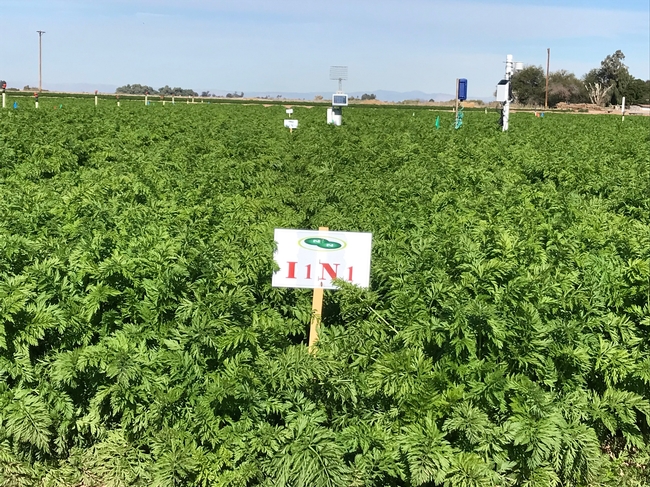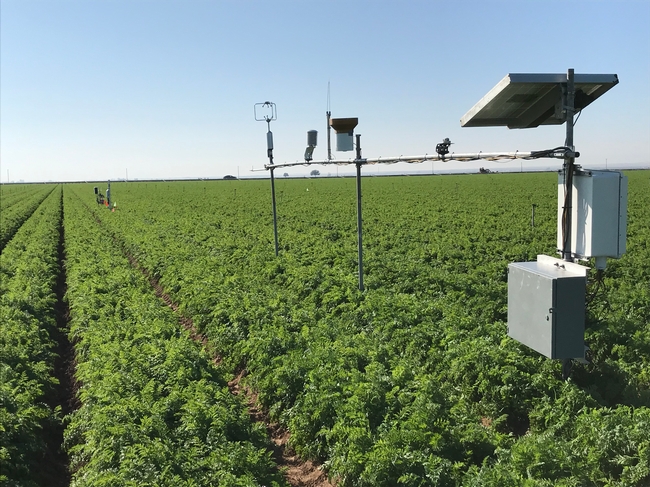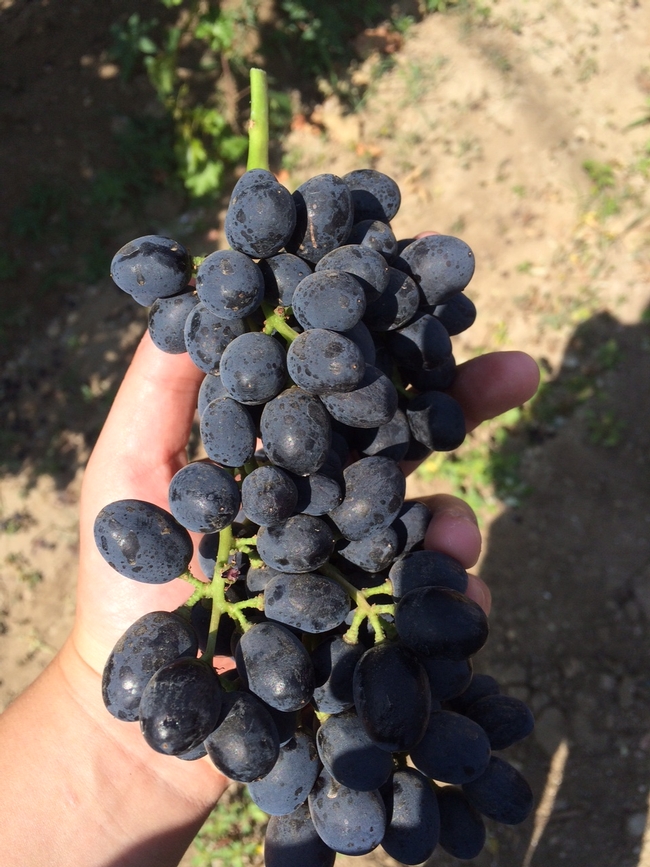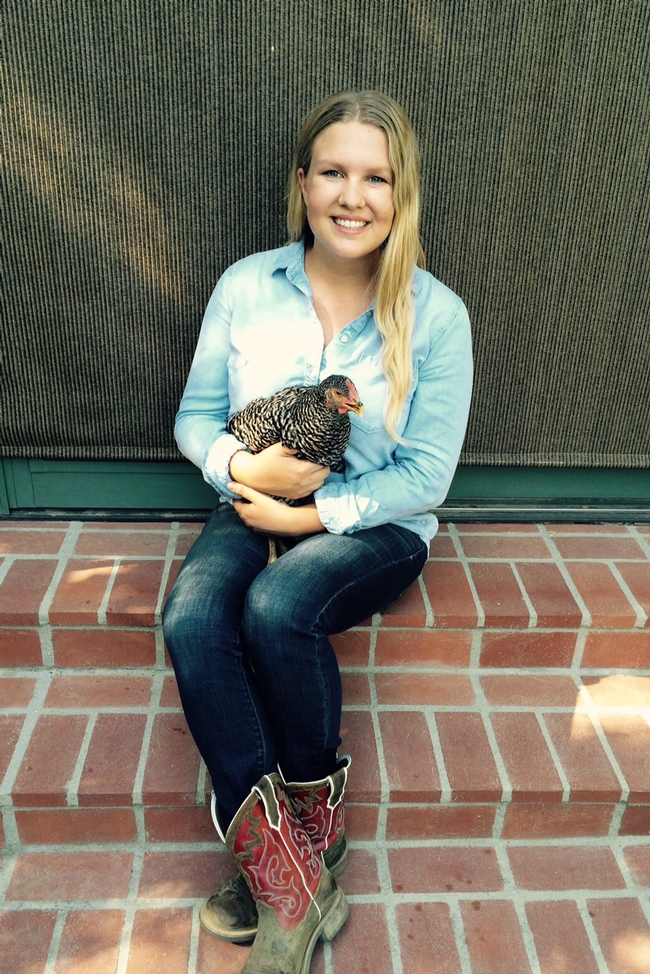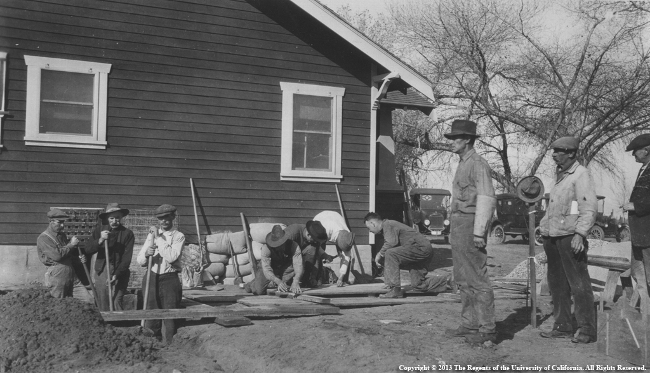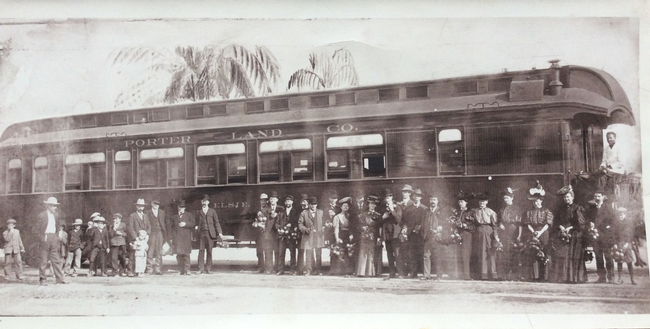Posts Tagged: Kern
New research fills gap on best practices for California carrot production
One doesn't need to be a seasoned farmer to know that growing conditions in Canada are completely different than those found in the low desert of California.
And yet, for many years, studies conducted in Canada were used to generate nitrogen uptake data for the California carrot production system, so growers managed their fields based on their own experiences – and that research conducted thousands of miles to the north.
Carrots had been among the crops grown in California that did not have site-specific data to suggest the best source, rate, timing and placement of nitrogen, in the highly variable cropping seasons and locations throughout the state. That's why new information – based on local research and published in August – is invaluable to farmers in Imperial and Kern counties, where the majority of the carrots in California are grown.
Two years of data from two experimental trials at UC Agriculture and Natural Resource's Desert Research and Extension Center – as well as from 10 commercial fields – produced key recommendations for farmers to make the most of their irrigation and nitrogen applications.
“The point is we developed information in your field, based on your practices, your climate, your production system – and this is what is really happening,” said Ali Montazar, UC Cooperative Extension irrigation and water management advisor for Imperial County. Montazar conducted the study alongside Daniel Geisseler, UCCE nutrient management specialist at UC Davis, and Michael Cahn, UCCE irrigation and water resources advisor for Monterey County.
With reliable data gathered under real-world conditions, Montazar said growers now have solid reference points for when – and at what rate – to irrigate and apply fertilizers in the low desert environment. One of the key findings, for example, was that the carrots' nitrogen uptake is generally low in the first 40 to 50 days, so growers are advised to limit their fertilizer application during that period.
Then, by tailoring those basic guidelines to their own site-specific situation and optimizing their practices, growers can maximize the amount of nitrogen taken up by the carrots – and minimize the amount that is leached out.
“Improving irrigation and nutrient management in the desert production system is what local growers are themselves trying to achieve. With improving efficiency and reducing nutrient leaching, we can improve the quality of water in the Salton Sea,” said Montazar, noting the longstanding challenges of reducing contaminants from irrigated lands to protect its unique ecosystem and wildlife.
While contamination of groundwater is not a critical issue in the desert, the best practices in this study can also help carrot growers in parts of California where nitrogen leaching into groundwater and drinking water supplies is a greater concern.
Montazar is currently leading a team in studying carrot-growing management practices under slightly different conditions in Kern County, with the hopes of publishing findings in late summer 2022.
The Imperial County study, “Spatial Variability of Nitrogen Uptake and Net Removal and Actual Evapotranspiration in the California Desert Carrot Production System,” is published in the journal Agriculture, and can be found at https://doi.org/10.3390/agriculture11080752. Findings and recommendations also appear in Progressive Crop Consultant: https://progressivecrop.com/2021/09/new-knowledge-based-information-developed-to-enhance-water-and-nitrogen-use-efficiency-in-desert-fresh-market-carrots/.
Funding for this study was provided by the California Department of Food and Agriculture's Fertilizer Research and Education Program, as well as the California Fresh Carrots Advisory Board.
UCCE intern reflects on her summer experiences
There is a mysterious sort of feeling that comes with being in a vineyard very early in the morning. It's tranquil and cool; it deceives you into thinking the temperatures won't be sweltering in a mere few hours. Surrounding alfalfa fields sweeten the air, and the sunlight that soon envelops the valley is soft. Though it's early, there is an industrious hum beneath the serenity. Birds are chirping, bugs are crawling, plants are growing, and already, workers are beginning their day.
Maybe it's the elusive feeling of belonging to something bigger than yourself, of being a part of the community whose work is rarely seen up close and even less frequently understood by the majority of society. It's a feeling of being connected to the past - part of an ageless industry, something essential and concrete.
It was this feeling that began the summer in which I learned more about agriculture than any book has yet to teach me, became even more enamored with the industry that is the heartbeat of our valley, and became involved with the community that works endlessly to keep that heartbeat steady and strong.
I was fortunate enough to be chosen for the University of California Cooperative Extension of Kern County's DiGiorgio Internship, a summer position that gives one student studying agriculture at the college level the opportunity to work with all of the farm advisors, thereby getting broad-based and hands-on work experience.
From cattle auctions and range evaluations to variety trials and almond harvests, I worked alongside the dedicated UCCE staff, helping with projects and experiments, attending lectures, going along on farm calls, and everything in between. Working with all of the advisors gave me a very realistic sense of the full cycle of farming and everything involved, from pest management and soil health to irrigation techniques and all of the extensive equipment and technology.
This summer was packed full of new experiences for me. As someone who does not come from an agricultural background, every day was a new adventure. I saw more varieties of potatoes than I knew existed at potato field day. I helped plant a field of pumpkins and then climbed onto a tractor for the first time a few weeks later, unsteady at first but soon confidently cultivating the rows, proud of a morning's work. I harvested tomatoes and admired the bright red fruit produced in the California sunshine.
I learned about the spirit of generosity that is so prevalent in the agricultural community. I received countless words of advice and wisdom from farmers, ranchers, writers, and teachers and met people ranging from 80-year-old cattlemen to fresh-out-of-college farm advisors, all equally enthusiastic about preserving the traditions of our valley while improving the industry and way of life. I came home many days hot and tired, but satisfied and feeling like I did something truly worthwhile.
This internship showed me the significance of UC Cooperative Extension's work. Behind the scenes, the advisors are constantly solving problems and doing the research to prevent them before they happen. They work towards achieving the best results possible because they know that their results do not just affect one grower, crop or sale; eventually, they affect us all. The advisors' generosity in sharing their knowledge with me was invaluable, and it was an honor to work for an organization that is constantly improving our most important industry.
That first early morning in that vineyard, only one thought ran through my mind: it's going to be a long, hot summer. Now, I'm looking my last week of work in the eye, with a pair of worn out boots in my hand and a lot more knowledge in my head. I started the summer only knowing that I had a passion for agriculture. I'm still drawn to it for the same reasons: being a part of something tangible, essential, historical, grounded and evolving. But I'm ending it with a much more realistic and extensive view of the industry, excited about the endless possibilities and confident in the years ahead.
Kern County farming families with a 100-year legacy to be honored by UC Cooperative Extension
Fourteen families who have a farming heritage in Kern County stretching back more than 100 years will be honored Aug. 21 by UC Cooperative Extension, which itself is celebrating 100 years of service to local farms and families.
In 1914, Congress and the president realized that, in order to feed a great nation, ag research advances from top universities had to reach farmers. So they created Cooperative Extension. For 100 years, Cooperative Extension academics have worked side-by-side with farmers to boost yields, battle pests, ensure food safety, protect the environment and make the best use of irrigation water available.
Some of the families to be honored Thursday are:
The Carver-Bowel family
The first generation of the Carver-Bowel family came by wagon train to California in 1850. Six generations have worked the cattle ranch that straddles the Kern-Tulare county line.
The Porter family
Farmer Dick Porter's grandfather planted oranges in Kern County in 1902. When the trees produced fruit, he hooked up his private train car to a trainload of Midwesterners to sell them land where they could grow "California gold." (A photo of the train car is below.)
The Fry family
Like UC Cooperative Extension, the Fry Ranch got its start in 1914. Mary Rebecca Yarnell Fry Lamb purchased 20 acres of undeveloped land in the Shafter area. In time, the family began a dairy and grew feed for the milk cows. They acquired land and, over 100 years, grew everything from alfalfa to wheat.
"When Kern County was created, the flatlands were considered uninhabitable, but over the years determined farming families put down roots and became the foundation of an industry that now produces farm crops valued at more than $6 billion a year," Marsh said. "Agricultural research and teaching have played a tremendous role in achieving that milestone and will continue to do so in the future."
|
When: |
5:30 to 8 p.m., Thursday, Aug. 21 |
|
Who: |
Members of 14 local families who have been farming in Kern County for more than 100 years Leticia Perez, Chair of the Kern County Board of Supervisors Zack Scrivner, District 2, Kern County Board of Supervisors Helene Dillard, Dean of the UC Davis College of Agricultural and Environmental Sciences |
|
Where: |
Kern Agricultural Pavilion, 3300 E. Belle Terrace, Bakersfield |
|
Info: |
Brian Marsh, director, UC Cooperative Extension, Kern County |
Lack of water is killing Kern County ag
The Bakersfield Californian reported that it isn't just the listless economy ravaging Kern County agriculture. The industry's woes are pinned on water.
Reporter Courtenay Edelhart spoke to the director of the UC Agricultural Issues Center, Dan Sumner, about the national economic downturn's impact on ag. With the exception of the dairy industry, Sumner said, agriculture prices haven't been that bad over the past year.
The state of California has, however, suffered three years of drought - with implications that even last month's series of storms cannot reverse. The Bakersfield area had 5.10 inches of rain between July 2008 and June 2009, and only 2.38 inches during the same period a year earlier, the article said.
But even more significantly, recent court and government actions regarding water allocations are not satisfying southern San Joaquin Valley agriculture's thirst.
- In 2008, a federal judge restricted pumping into agricultural canals from the Sacramento-San Joaquin Delta to protect Delta smelt
- The California Department of Water Resources said it will only be able to deliver 5 percent of requested State Water Project water this year to the Bay Area, San Joaquin Valley, Central Coast and Southern California, although that figure may be updated next month
- The U.S. Bureau of Reclamation allowed only a 10 percent allocation for agriculture south of the delta.
The result: 40,000 acres of Kern County farmland aren't being farmed and, in December 2009, Kern County had 1,400 fewer farm jobs compared with December 2008.

Irrigating young cotton.


